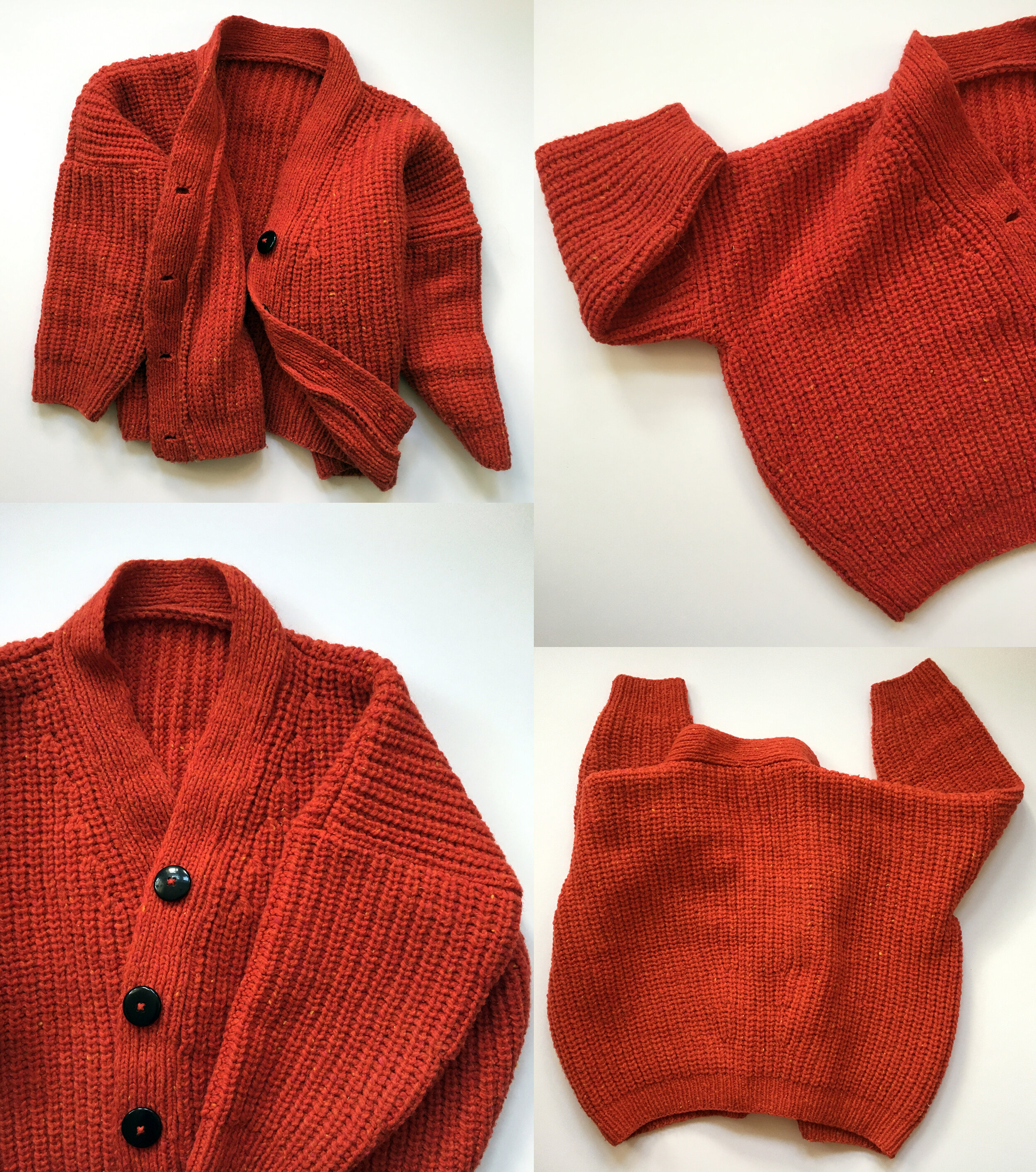Babaa-esque
(Note: because this sweater is a blatant copy of a commercially produced design by someone else I will not be writing up a pattern for sale or otherwise. My notes are intended to help you find your way, but they won’t stand alone as a guide- some research on your own will be necessary!)
I don’t think I’m alone in coveting Babaa sweaters and I know that I’m not alone in being unable to swing the $250+ price tag for a single garment. After 4 years of pretending I might save up for one (and 4 years of car maintenance and cavities and other expectable surprises) I decided to make one. I wrote about that sweater here- and while I still feel weird about writing a pattern based on someone else’s design, I thought I’d share some of my notes for anyone else who wants to embark on a similar project. The first sweater was knit out of a single ply wool that I reclaimed from a sweater my mama knit in the 80’s. I started wearing it daily and… it pilled like a wild thing. I decided to knit a second one to offset the wear on the first, so I sold off some single skeins of yarn and bought 6 skeins of Peace Fleece worsted in my favorite Sakhalin Salmon.
When I began my research I looked at Fashion Backwards a lot- folks sell Babaa sweaters there regularly and show them at a whole variety of angles. I could tell from looking at the sweaters that they were knit in half brioche- the same pattern I used for the Gas Station Beanie- from the bottom up. I decided to do the brioche on the wrong side (brioche-ing the knit stitches), so increases and decreases were all done in plain rib on the right side. The sweater is made up of a back- basically a large rectangle, two identical fronts, two sleeves, and a button band. I did all of the cuffs/bottom/button-band in 1x1 rib on US6 needles and the body/brioche on US9. Because of the brioche each increase/decrease is +/- 2 stitches. I just kind of winged them, using a mix of picked up stitches and twisted yarn overs for the increases, and decreasing by knitting 3 together or the equivalent going in the other direction (those little hearts, for folks wondering). For the seams I left a two stitch edge, garter and then a purl ditch to stitch in. I sewed the pieces up on the sewing machine (because I hate seaming by hand- and also because I like how it looks). I knit the button band, starting with the buttonhole side and knitting it longer than I anticipated needing. Then after I sewed it on I unraveled the extra length back until it was flush with the hem and bound off. To line the buttons up I closed the cardigan and put safety pins where the buttonholes lined up with the other side. I’ve never actually seen a Babaa sweater in person, so I based my numbers off of how I wanted the sweater to fit- boxy and wider than it is long, with a bit of structure and a bit of drape. I find half brioche easy to read, so I studied photos and made notes of where I saw increases and decreases. Then I knit a swatch and plugged those increases and decreases in based on my projected stitch count. The notes on the left are the ones I used for the black and red sweaters. My gauge was a hair bigger with the red sweater (you can see the two gauges in my notes), so it fits oversized. Both sweaters took about 600 grams of yarn (just shy of 6 full skeins for the red one). The notes on the right are for the yellow sweater that I’m trying to eke out from 4.5 skeins (also Peace Fleece worsted)- it will be a little more fitted/cropped. Buttons for both sweaters are vintage- the yellow ones were from my Oma and the other set I found at the Waste Shed, my local art thrift.

